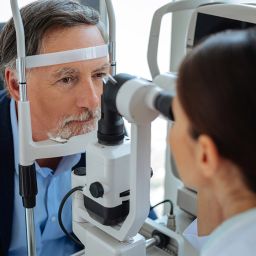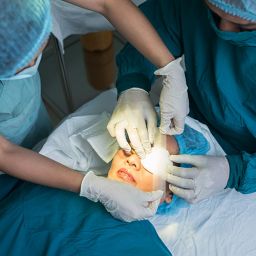Light Adjustable Lens (LAL): A Game-Changer in Cataract Surgery
A complicated organ that gives us the ability to perceive our surroundings in exquisite detail, the human eye is a wonder of nature. But as we age, it becomes more prone to specific ailments, just like all other areas of the body. Cataracts, a clouding of the eye’s lens that impairs vision, are one of the most prevalent age-related conditions. The surgical removal of the clouded lens and replacement with an artificial intraocular lens (IOL) has been the standard treatment for cataracts for many years. But what if we could improve this procedure even more to provide even better post-operative results? The Light Adjustable Lens (LAL) is now available.
1. What is the Light Adjustable Lens (LAL)?
In the realm of ophthalmology, LAL is a cutting-edge technology. The LAL is constructed of a special photo-sensitive material, unlike conventional IOLs, which once implanted have a set optical power. This substance reacts to ultraviolet (UV) light, enabling later modifications to the lens’s power after implantation. In essence, this means that the lens may be customized to meet the unique post-surgery demands of every patient.
2. How Does LAL Work?
There are two main steps in the procedure:
- Implantation: The LAL is put in place of the cloudy lens once the clouded lens has been removed, much like in conventional cataract surgery.
- A controlled amount of UV radiation can be used to modify the lens’s power throughout the healing phase following surgery. The lens’s structure changes as a result of exposure to this UV radiation, either thickening or thinning, which alters the lens’s power. You can make this change several times until you get the vision you want.
3. Key Benefits of LAL
Precision is unmatched because to the post-operative adjustments. Traditional IOLs have preset prescriptions and don’t always provide 20/20 vision without the use of glasses or contact lenses. LAL, on the other hand, can be adjusted until the best outcome is obtained, significantly raising the possibility of 20/20 vision following surgery.
Individualization: Because each person’s eyes are different, so are their visual needs. Each lens can be modified using LAL post-operatively to meet the patient’s unique visual requirements, whether they pertain to close, intermediate, or distance vision.
Reduced Need for Additional Corrective Measures: Patients equipped with LAL frequently discover that they no longer need glasses or contact lenses following surgery because of its customizable nature.
Adaptability: Because life can be unpredictable, our eyesight requirements may alter over time. In the ever-changing world of ophthalmological treatment, LAL offers a dynamic solution with the opportunity for future revisions should the need arise.
4. Considerations and Limitations
Like all medical procedures, LAL has several precautions and restrictions. Patients must avoid UV rays or direct sunlight after surgery until the lens correction is complete. To prevent the lens from being adjusted too soon, special sunglasses are offered. There is also a limit on how much the lens power may be altered, despite the fact that LAL allows numerous adjustments.
5. The Future of LAL
The introduction of the Light Adjustable Lens has fundamentally altered intraocular lens implantation and cataract surgery. We can only expect future improvements to this method as technology develops, making it more practical and effective.
For patients, the prospect of having sharper, clearer vision without having to rely heavily on corrective lenses or glasses is very alluring. Thanks to LAL, it is now possible to regain the whole range of vision, from viewing a far horizon to reading a book up close.
Conclusion
Those having cataract surgery have a potential option in the Light Adjustable Lens (LAL). It offers the special benefit of post-operative modifications, increasing the possibility that the desired vision will be realized. To explore the best solutions suited to your needs, as with any medical procedure, it is imperative to speak with an ophthalmologist. For patients looking for improved vision, the future appears promising thanks to the LAL’s benefits that have been demonstrated and its potential to alter the paradigm of cataract therapies.









